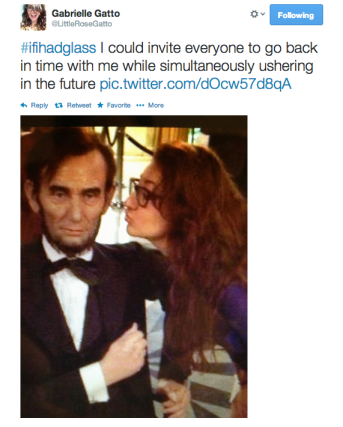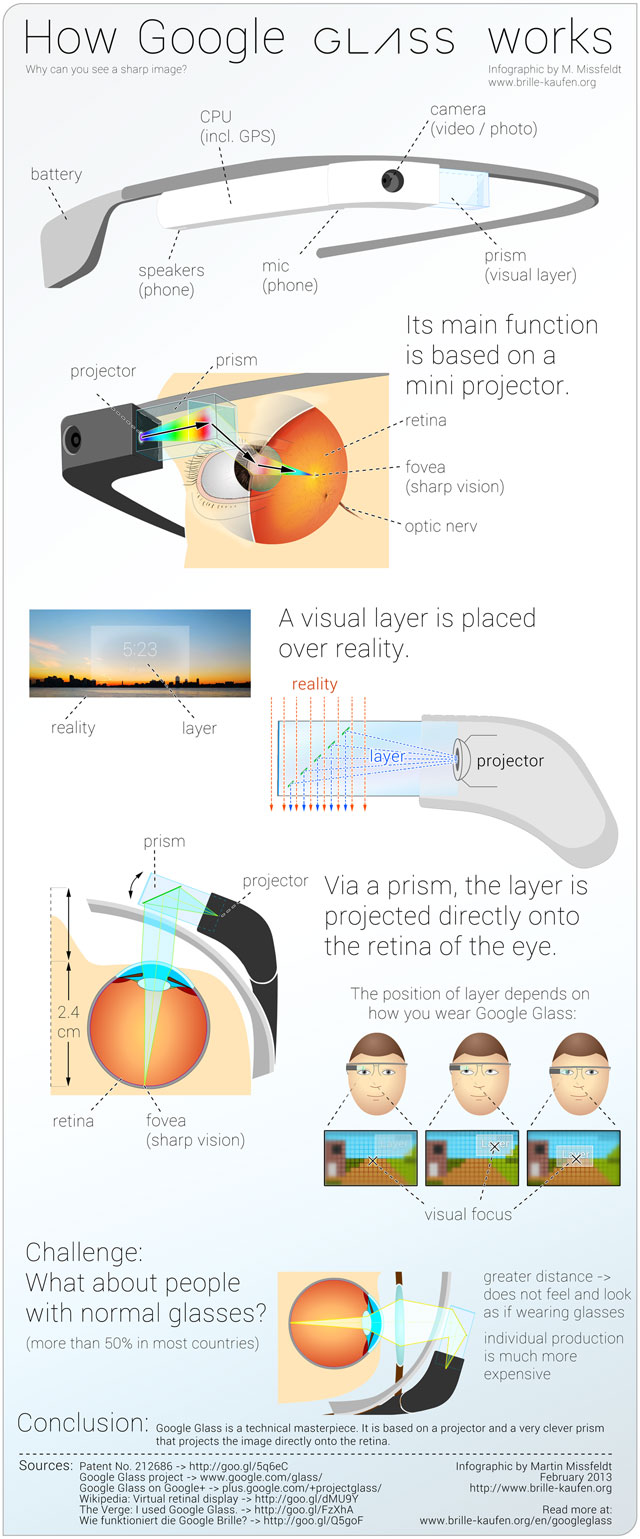Google Glass
(NEW ORLEANS, La.) – If you want to take a glance into the future of journalism Loyola University New Orleans’ School of Mass Communications has you covered. With a recent purchase of Google Glass, the SMC has made a huge investment into the future of digital journalism and story telling.
In the spring of 2012, Google released 10,000 beta versions of a new technological device called, “Google Glass.” Glass is an always-ready smart device that in the tech world has often been referred to as “wearable computing eyewear”. The latest version of Glass is a lens-free, head mounted device which projects an augmented reality on your real world via an optic prism situated on the upper right of the user’s field of vision. It sees what you see and it hears what you hear. Although it might be a stretch to say that Glass will revolutionize journalism as we know it, it certainty has made a huge impact thus far.
With the recent purchase of Glass, students at Loyola’s SMC now have the opportunity to experiment with Glass, taking citizen journalism to a whole new level. With the help and success of Glass, journalism is changing the news into a place where content is created and shared instantly, quite literally through the eyes of the reporter. One of the most important aspects of journalism is the ability to react quickly. While out in the field, a journalists job is to be the eyes and ears for the public. A lot of the time this means with the help of many devices: a smart phone, a laptop/tablet, and potentially heavy broadcast equipment. One of the first things Glass is capable of is freeing up the device overload. Since Glass is a hands-free piece of hardware that has all the same functions of the aforementioned, journalists will be temped by its mobility and ease.
Visiting professor Andrew Nelson and head of the Social Media Strategies class talked about his excitement in what Glass has to offer for his students and the classroom.
“Your eyes are a lens and your body is a tripod. You are able to create in a whole new POV experience which people haven’t explored before,” says Nelson.
Journalism Senior Valeria Arias is a part of the social media strategies team for the SMC. She is also on the team of students who first got to test out Glass.
“It is a really good research opportunity for students to get a chance to test out Glass. You can record video, take pictures and share it instantly. My favorite part about them is that they are hands free and I can just wear them around everywhere,” said Arias.
Tim Pool is a reporter from Vice who recently used Google Glass to cover protests that were taking place in Istanbul. The Guardian online reported that Pool tweaked his Glass to run Android apps, and sideloaded several onto the device, including Ustream to livestream video, a remote-control app to access his desktop computer at home, and a translation app that’s already come in handy for this Turkish non-speaker in Istanbul. “When there’s a wall of police firing plastic bullets at you, and you’re running through a wall of tear-gas, having your hands free to cover your face, while saying ‘OK Glass, record a video’, makes that recording process a lot… easier,” says Tim Pool. Glass allowed him to report on the protests hands free, ultimately helping him stay safe. According to the Guardian, Pool’s livestreams of the protests attracted more than 750,000 unique viewers in a single day.
Glass hasn’t just been making advances in the journalism field, there are now glass apps for surgeons in the operating room, shopping, fitness and health, foreign language translation, and real-time baseball game stats. The Verge, an online publication dedicated to covering the latest in technology, science, art and culture, has conducted a ton of field research with Glass since the beta release. A recent Verge experiment with a rising basketball star Victor Oladipo’s took us behind the scenes of his day during the 2013 NBA Draft.
“Come with me on the ‘VO Show,’” Oladipo says as we take a journey with him on the biggest day of his basketball career.
Victor used Glass to record his entire draft experience, from the time he woke up to the minute he was selected in draft the second spot by the Orlando Magic. His video collaboration showed basketball fans an endless stream of family, friends, teammates, coaches, and everyone who was apart of making history with him that day. In the midst of it all, according to Verge, Victor mentioned how the Glass wasn’t even distracting. Glass allowed Oladipo to capture elements of his life that would have been impossible otherwise. Basketball fans get an experience in his POV of an exciting day in the NBA and first-hand of what it is like to be a top draft pick. Gabrielle Gatto a Film student here at Loyola got her hands on a beta version of Glass back in the summer of 2013 after winning #ifihadglass, a Twitter contest Google plus.
“It was really crazy actually, I saw the contest and I tweeted ‘#ifIhadglass, I would invite all my friends to go back in time with me while simultaneously ushering in the future’ …and picture of me kissing Abraham Lincoln at the wax museum, and I won. A couple of months later I was invited into the Google offices in New York to learn all about Glass,” said Gratto.
Gratto is actively apart of the Google Explorers team and has been experimenting with Glass for over a year now. She has helped team with research improving the different versions of Glass for its upcoming public release. She believes that Glass is a great addition to her everyday life and can’t wait for what’s in store.
The more glass continues to proves itself as a powerful rising new technology, the more it is likely to find its way into the hands of many of journalists.
On its website for Glass, Google has posted advice for testers in their current explorer program and many websites have deemed the title of the tips, “How to not be a Glass-hole.” The list includes; DO: Ask for permission DON’T: Be creepy or rude (aka a “Glasshole”) DO: Take advantage of the Glass voice commands DON’T: Wear it and expect to be ignored While its possibilities are quite limited right now, Glass has the potential of changing the way stories are being told. The product is expected to be available for public release by the summer of 2014 and should retail for around $1500. A Few Quick Tech Specs:
- The display has a 640×360 pixel resolution, which might sound a bit low at first, but bear in mind the panel is actually just a tiny piece near your right eye. Google claims it provides the equivalent picture to that of a 25-inch HD display when viewed from eight feet away.
- The built-in camera is a 5-megapixel unit with 720p video capture, while audio is handled via a bone conduction transducer. In other words, rather than having actual headphones it sends the audio vibrations directly through the small bones in your ear, which you then hear as sound.
- The onboard storage is 16GB, although 12GB of this is usable as 4GB is presumably taken up by the software. The device is fully synced with Google’s cloud storage.
- Supposedly, Glass frames will fit ‘any face’ and it comes with three sets of adjustable nose pads to help you get a comfortable experience.
- It charges with a standard microUSB cable.
- There is full WiFi and Bluetooth connectivity to link up with your phone if needed.
How Glass Works:  Here is a slideshow of some of the photos taken of/from the Glass:
Here is a slideshow of some of the photos taken of/from the Glass:
